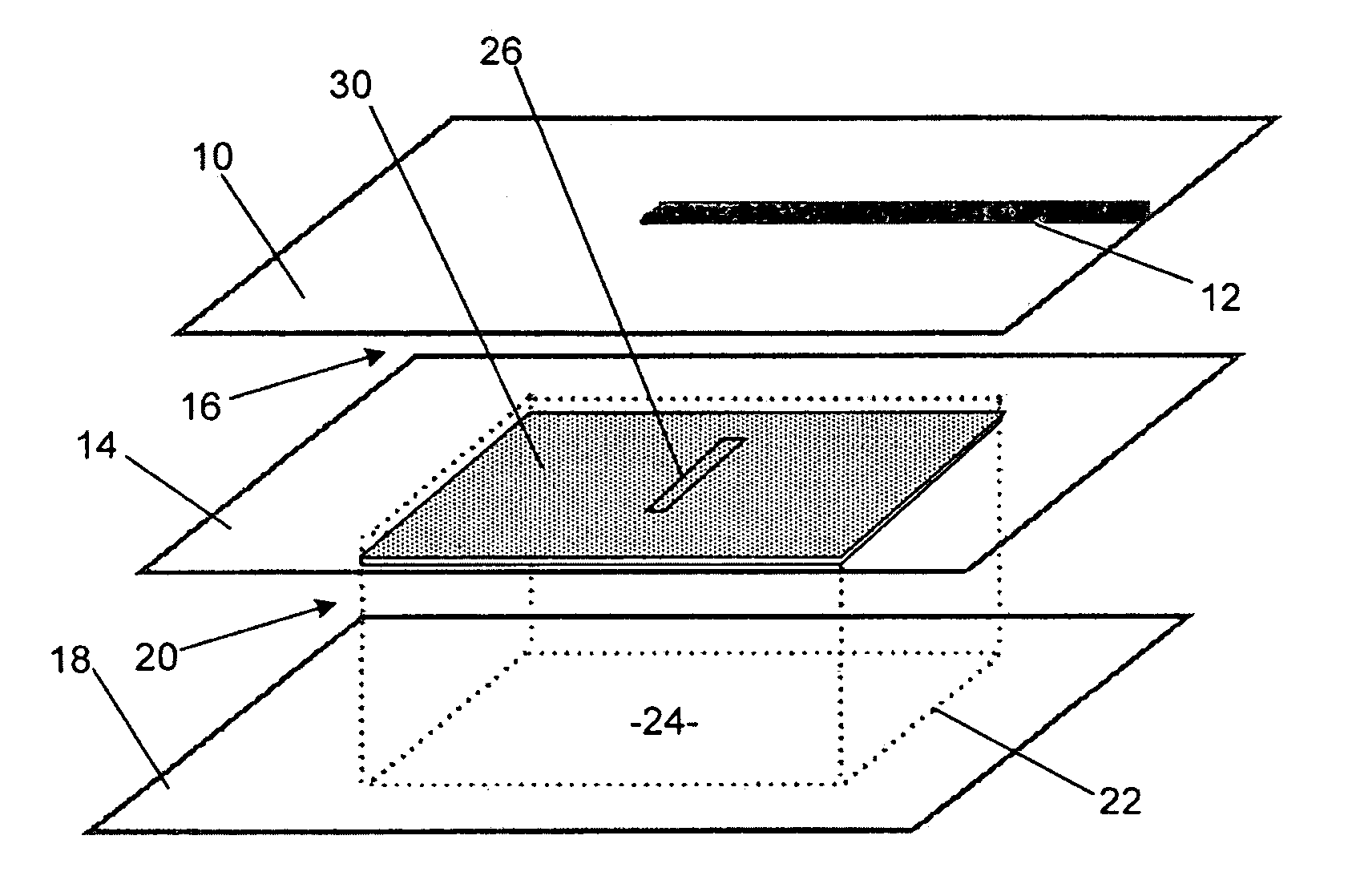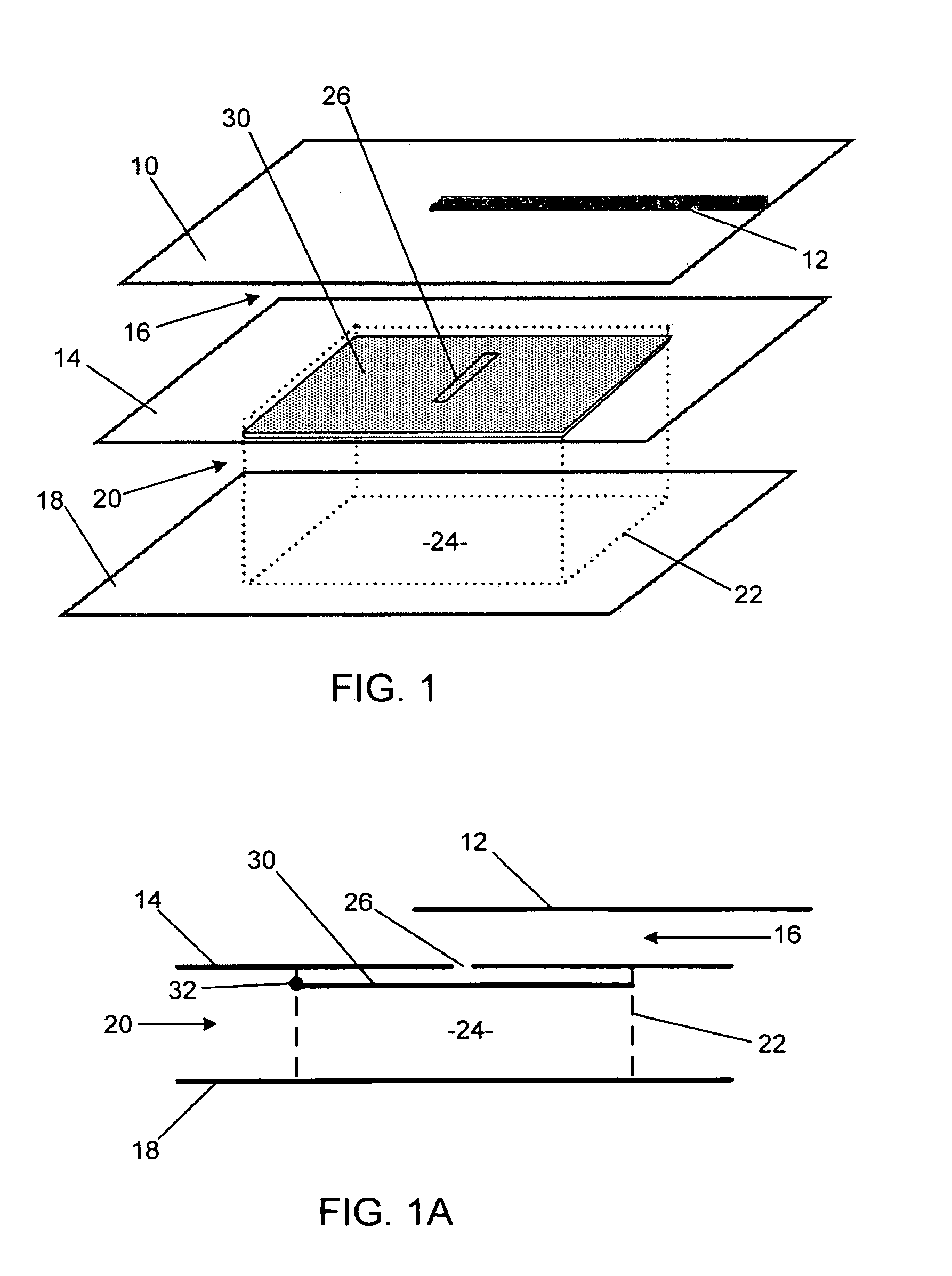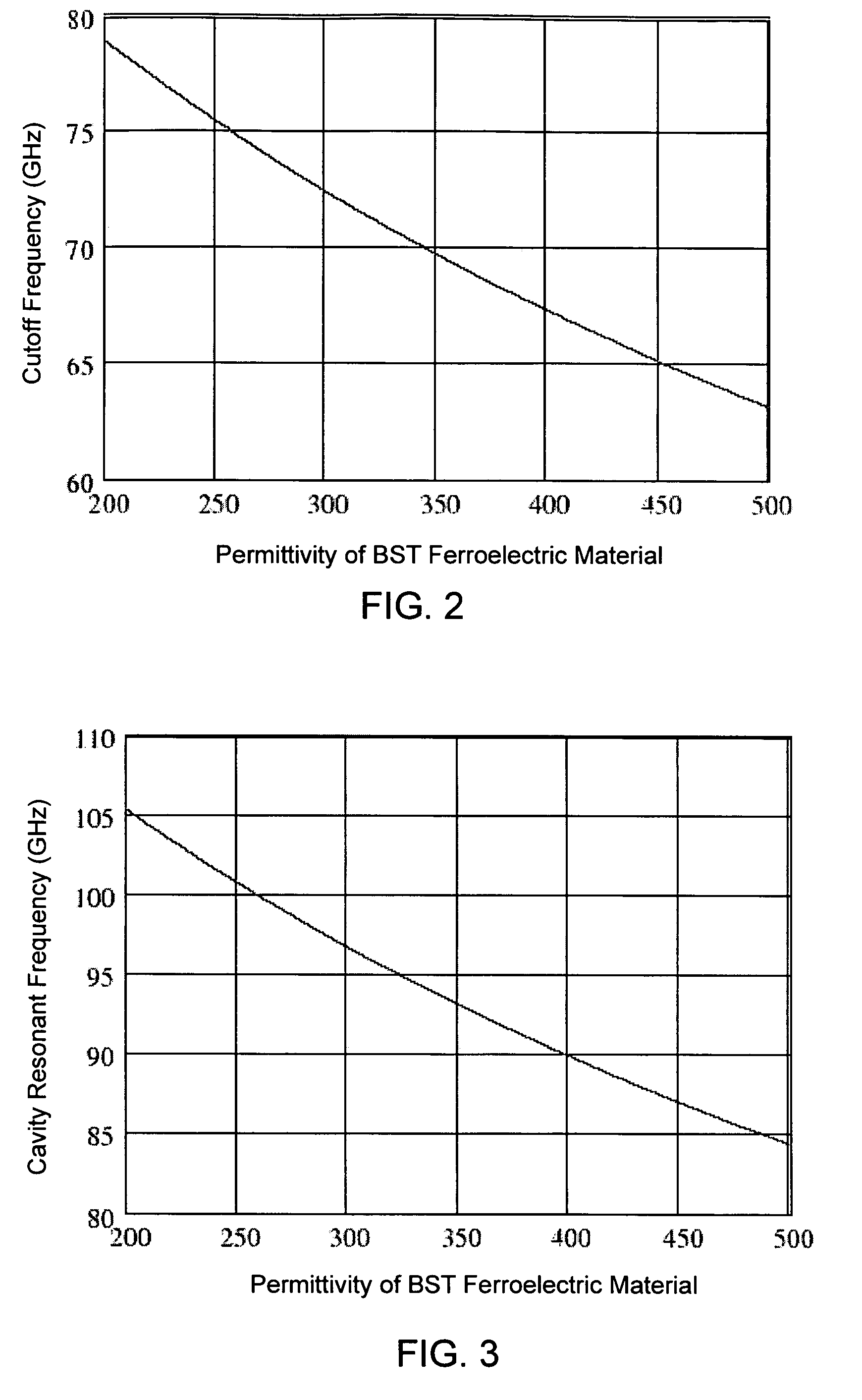Monolithic microwave integrated circuit (MMIC) waveguide resonators having a tunable ferroelectric layer
a technology of ferroelectric layer and integrated circuit, which is applied in the direction of resonators, oscillators, electrical equipment, etc., can solve the problems of inability to tun, inability to meet the requirements of high-q resonators, etc., to achieve convenient integration, eliminate losses associated with coupling to external devices, and simplify manufacturing process
- Summary
- Abstract
- Description
- Claims
- Application Information
AI Technical Summary
Benefits of technology
Problems solved by technology
Method used
Image
Examples
Embodiment Construction
[0020]As shown in the drawings for purposes of illustration, the present invention pertains to radio frequency waveguide resonators. As discussed more fully above, conventional approaches to producing resonators have serious shortcomings when applied to extremely high frequencies. In accordance with the present invention, the disadvantages of the prior art resonators are overcome by providing a high-Q waveguide resonator that is conveniently integrated into a MMIC (monolithic microwave integrated circuit) structure with other related components, is conveniently tunable in resonant frequency, and can be produced reliably and at relatively low cost.
[0021]As shown in FIGS. 1 and 1A, one preferred embodiment of the invention uses a MMIC technique known as multi-layer metal (MLM). The resonator structure depicted includes a first metal layer 10 of FIG. 1 comprising a coupling strip 12 that provides external connection of the resonator to a voltage controlled oscillator (VCO) or other dev...
PUM
 Login to View More
Login to View More Abstract
Description
Claims
Application Information
 Login to View More
Login to View More - R&D
- Intellectual Property
- Life Sciences
- Materials
- Tech Scout
- Unparalleled Data Quality
- Higher Quality Content
- 60% Fewer Hallucinations
Browse by: Latest US Patents, China's latest patents, Technical Efficacy Thesaurus, Application Domain, Technology Topic, Popular Technical Reports.
© 2025 PatSnap. All rights reserved.Legal|Privacy policy|Modern Slavery Act Transparency Statement|Sitemap|About US| Contact US: help@patsnap.com



